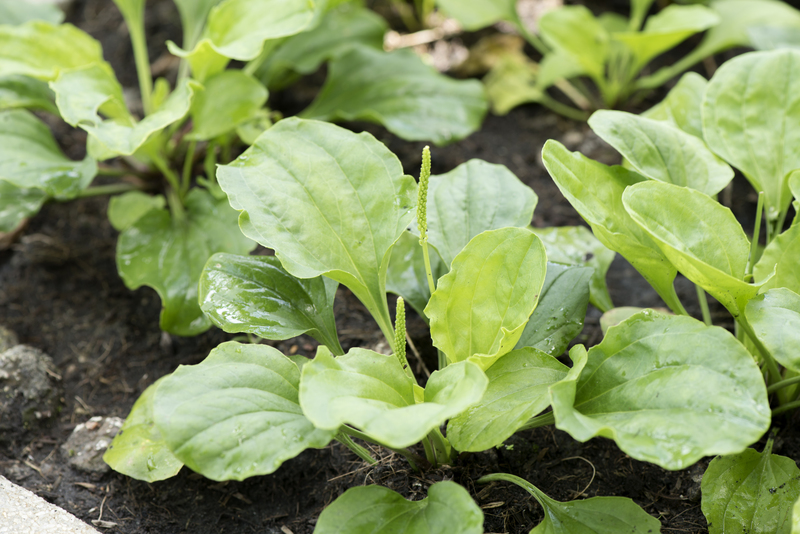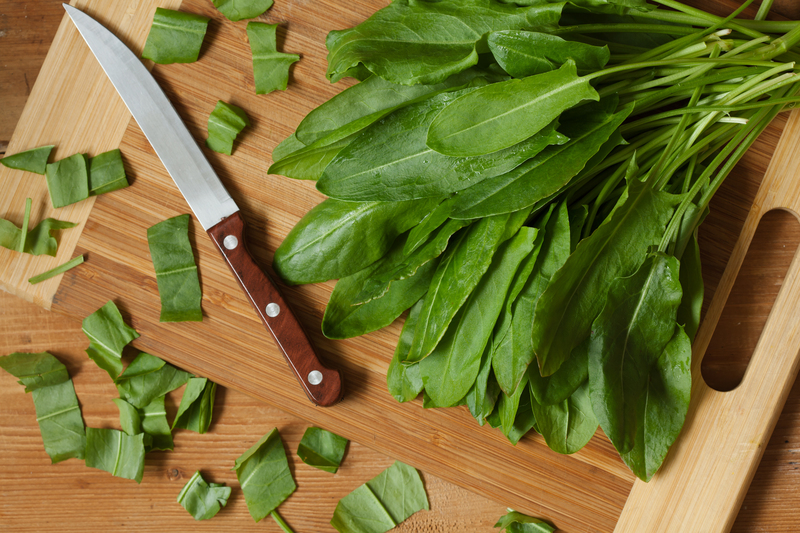Unlock the Secret to Weed-Free Gardening with These 3 Tips
Posted on 07/09/2025
Unlock the Secret to Weed-Free Gardening with These 3 Tips
Weeds - every gardener's nemesis. They sprout uninvited, stealing nutrients, water, and sunlight from your prized plants. No matter the size of your plot, learning how to maintain a weed-free garden can feel like an endless battle. But what if you could finally break the cycle and cultivate a lush, healthy, and weedless paradise? In this article, you'll discover the top three secrets to achieving exactly that.
Whether you are a beginner or a seasoned green thumb, embracing these expert-backed approaches will revolutionize your garden routine. Say goodbye to endless pulling and chemical sprays--and hello to more time enjoying your gorgeous, flourishing yard!
Why a Weed-Free Garden Matters
Before diving into the best ways to control garden weeds, it's essential to understand the impact of these persistent pests. Weeds disrupt the ecosystem of your garden, competing with your vegetables, flowers, or shrubs for vital resources. Not only do they impact your crops' health and harvest, but some even harbor pests and diseases that can spread to your beloved plants.
- Reduce plant stress: Fewer weeds mean your crops and flowers receive more water, sunlight, and nutrients.
- Minimize disease risk: Some weeds attract harmful insects and pathogens.
- Boost beauty: A weed-free landscape is simply more attractive and enjoyable.
Unlocking the secret to a weed-free garden isn't a mystery when you use the right strategies. Let's get started!

Our Top 3 Proven Tips for a Weed-Free Garden
1. Mulching: The Natural Weed Barrier
One of the most effective weed control strategies is mulching. This age-old technique not only suppresses unwanted plant growth but also boosts soil health in multiple ways. The key benefit of mulch is that it blocks sunlight from reaching weed seeds, preventing them from germinating in the first place.
Types of Mulch for Weed-Free Gardening
- Organic Mulch: Includes straw, shredded bark, wood chips, compost, pine needles, grass clippings, and leaves. They decompose over time, enriching your soil with nutrients and improving moisture retention.
- Inorganic Mulch: Includes landscape fabric, plastic sheeting, and gravel. These types don't break down quickly and provide a longer-lasting weed barrier, especially suitable for pathways and perennial beds.
Apply mulch in a layer 2-4 inches thick, taking care not to pile it directly against stems or trunks. Refresh your organic mulch annually, or as it decomposes, to maintain its effectiveness.
Pro Tip: Consider using newspaper or cardboard underneath your mulch. This added layer creates an extra barrier against tough, perennial weeds and helps smother existing invaders.
Benefits of Mulching to Keep the Garden Weed-Free
- Keeps soil cool and moist, reducing stress on your plants
- Blocks sunlight, preventing weed germination
- Improves soil structure and fertility
- Saves time spent on weeding throughout the growing season
Mulching is a simple, eco-friendly foundation for a consistently healthy landscape and a top solution for anyone seeking weedless gardening.
2. Consistent Hand Weeding and Cultivation
Although preventative techniques are invaluable, some weeds will inevitably sprout--especially when you're starting out. That's where regular hand weeding and shallow cultivation become your best friends.
Mastering Manual Weed Removal
The key to minimizing weeds is to remove them quickly before they mature and set seed. If you leave weeds unchecked, each one can produce thousands of seeds that linger in your soil for years. Early intervention pays huge dividends in reducing long-term work!
- Weed after rain: Moist soil makes it easier to pull up entire root systems, preventing regrowth.
- Focus on young weeds: Small seedlings are simple to uproot and less likely to regrow.
- Use the right tools: Invest in a hand cultivator, hoe, or dandelion puller. The right tool makes a big difference in comfort and efficiency.
For larger beds, consider using a stirrup hoe or Dutch hoe to quickly skim off small weeds just below the soil surface. This technique should be done shallowly to avoid disturbing deeper weed seeds.
5 Time-Saving Tips for Hand Weeding:
- Stick to a regular schedule. A weekly walk-through keeps weeds from getting out of control.
- Pounce early--target weeds before they flower or spread.
- Don't compost perennial weeds (like dandelions or bindweed) unless your compost pile gets hot enough to kill the roots and seeds.
- Keep your garden tools clean and sharp for efficient work.
- Make it a habit: Just 10 minutes a day can keep your garden mostly weed-free all year.
Manual control requires some effort, but when practiced consistently, it's a fundamental step in the path to a weed-free garden.
3. Smart Planting Strategies: Grow Dense, Outcompete Weeds
One of the lesser-known secrets to minimizing weeds is to use the power of your own plants. Densely planted beds naturally crowd out weeds by shading the soil and reducing space for weed seeds to germinate and grow. Nature abhors a vacuum: bare ground is simply an open invitation for opportunistic weeds!
How to Harness Plant Spacing for Weed Suppression
- Closely space crops: When sowing vegetables or annuals, use intensive spacing recommended for square foot gardening or block planting. The leaves will quickly overlap, creating living mulch that suppresses invaders.
- Choose ground covers and low-spreading perennials: Plants like creeping thyme, clover, or ajuga can create dense mats that block sunlight and crowd out weeds on garden borders or between larger shrubs.
- Interplanting: Mix faster-growing crops (like lettuce, spinach, or radishes) among slower plants (like tomatoes or peppers) to shade the soil early in the season and reduce open areas.
In flower beds, select perennials that are known for their robust growth habits and rapid ground coverage. Position larger, bushy plants closer together than you might in more formal designs, but don't over-crowd--plants still need room for healthy air flow and future growth.
Bonus: Speaking of outcompeting weeds, don't overlook the use of cover crops, also known as "green manure," in off-seasons! Crops like winter rye or vetch suppress weeds, protect soil structure, and can be turned over to add organic matter for the coming growing season.
Weed Control Myths--And What Actually Works
The gardening world is rich with advice, but not all of it is effective. Here are a few commonly shared weed control myths--and proven science-backed alternatives:
- Myth: Pouring salt or vinegar on weeds will solve the problem.
Fact: While high concentrations may kill weeds, they also harm your soil and nearby plants. Use targeted removal or mulch instead. - Myth: You have to use chemical herbicides for a weed-free garden.
Fact: Manual, organic, and cultural controls are just as effective (if not more so) and safer for the environment.

Frequently Asked Questions: How to Maintain a Weed-Free Garden
Still have questions? Here are answers to some of the most common weed-free gardening concerns:
How often should I mulch to prevent weeds?
Organic mulches should be topped up every 1-2 years, or whenever they decompose below a 2-inch layer. Inorganic mulches (like fabric or gravel) can last for many seasons, but should be checked yearly for bare patches where light might reach the soil.
Does tilling before planting help with weeds?
Tilling should be used with caution. While it may bury weed seedlings, it can also bring dormant weed seeds from deeper soil layers to the surface. For the best weed prevention, till only when necessary, and follow up immediately with mulch and/or dense planting.
What's the best time to weed the garden?
Ideally, weed after a rainfall, when the soil is moist but not soggy. However, making weeding a weekly habit, regardless of weather, will help keep weeds from getting out of control.
Conclusion: Your Path to a Garden Free of Weeds
Mastering weed-free gardening is within everyone's reach. By using an integrated approach--mulching, consistent hand weeding, and dense, smart planting--you'll save time, reduce labor, and create a healthier, more beautiful garden. Start with just one tip, and soon you'll see the difference. With these science-backed secrets, you'll enjoy the rewards of lush, weedless beds and thriving crops all season long!
- Mulch wisely to block sunlight and enrich your soil
- Weed early and often to break the seed cycle
- Plant densely to create a living weed barrier
Reclaim your time and elevate your gardening experience by making these simple changes. Now that you hold the secret to weed-free gardening, what are you waiting for? Happy gardening!

